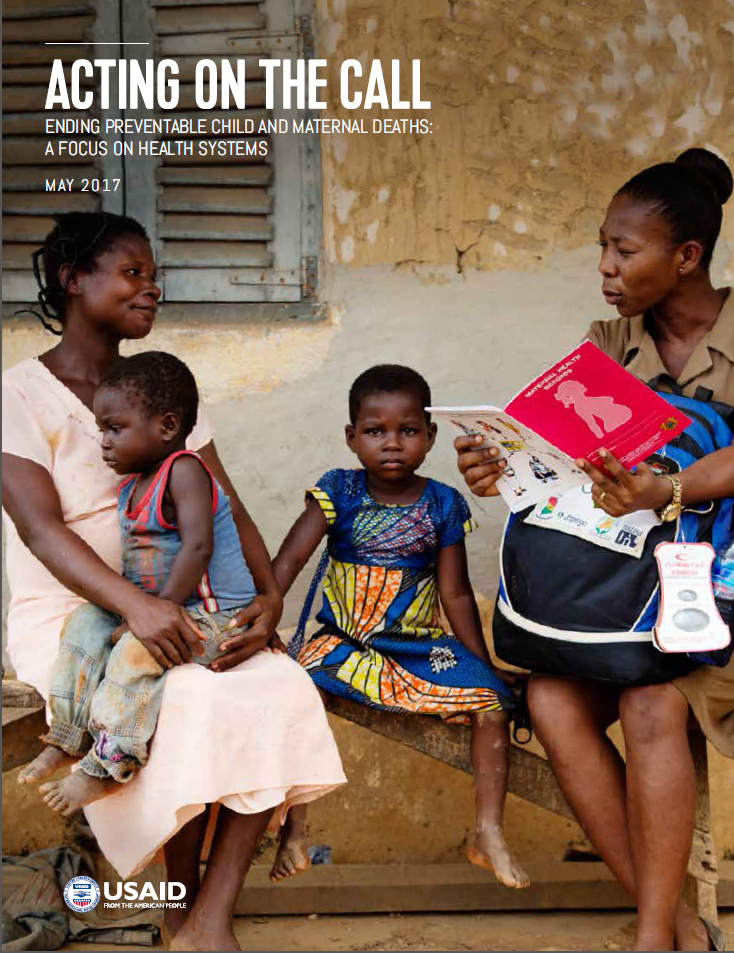Speeches Shim
![]() (10 MB) Acting on the Call Report 2017
(10 MB) Acting on the Call Report 2017
Health systems are the backbone of our efforts to save lives. While the connections between health systems and health outcomes make intuitive sense in the global health space, health systems strengthening (HSS) interventions have often been thought of as too far removed from health outcomes to establish a direct linkage.
USAID values and believes in health systems. Like the concept of a medical home, which is a team-based approach to delivering comprehensive and continuous medical care centered around the needs of the patient, health systems strengthening brings together the community of people that work on health within a country. It promotes population level health outcomes by making health systems more efficient, resilient, and sustainable.
For the first time—through the combined efforts of USAID and UNICEF—this report provides quantitative estimates of the value of investing in strengthening health systems in terms of the lives that will be saved. In previous Acting on the Call reports, we imagined a world where countries could scale up high impact maternal and child health interventions at rates equal to those previously achieved by “best performers.” Now we show how the scale-up of health systems interventions, chosen for their country-specific feasibility, are an essential element of achieving those ambitious outcomes.
On the following country pages, you will see the impact of these health systems interventions. The horizontal bar chart, labeled “Scaling Up Health Systems Activities” on each country page, shows this modeling. It demonstrates the possible lives saved by health systems interventions that are scaled up throughout the country. The modeling reflects input from country teams that takes into account the feasibility of each health system intervention. These results are produced by determining the effect that each health systems strengthening intervention has on reducing key bottlenecks for patients to access different categories of care: care for childhood illness, delivery care, preventive care, and community-based practices. The distribution of the lives saved by each of these categories is shown in the next graph.
Finally, we look at the 2016 Acting on the Call report findings and show how health systems interventions can remove bottlenecks to the interventions that we identified as most needed to increase equity and reach the unreached. We demonstrate how addressing bottlenecks impacts the delivery of health care across the quality continuum, improving access to and quality of basic health services—ultimately ensuring that as many people as possible receive high quality care. Strengthening health systems allows us to ensure more people access basic levels of care while also helping us improve the quality of care for those who already have some access. Following the country pages, we explore in depth how different health systems interventions impact various aspects of USAID’s effort to save women and children.


Comment
Make a general inquiry or suggest an improvement.